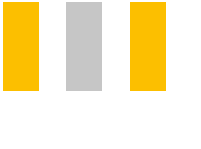GRAFE develops numerous materials for 3D printing
Wednesday, 09/18/2019

Once a niche for hobbyists – today a mass market: Over the past ten years, 3D printing has developed into a high-turnover business and is now an important step towards series production.
If you take a look at the forecasts for the future, they look excellent with double-digit growth rates. According to a report by the International Data Corporation (IDC), the global 3D printing industry is expected to generate sales of 13.8 billion US dollars in 2019. By 2022, the additive manufacturing market is expected to grow to $22.7 billion.
The company GRAFE, based in Blankenhain, has been active for many years in the field of colour development for 3D printing and has extensive experience in this field through numerous successfully implemented projects. “We are aware of the special challenges. In addition to colours, material properties are becoming increasingly important, which is why we have already successfully implemented many developments to incorporate special materials into polymers or to colour filled materials, for example with a carbon fibre component,” explains Export Manager Florian Ludwig.
“Especially in small quantities – for example in the case of newly founded companies – it is important that we have no minimum order quantity and that the entire colour development process, including a small initial sample, is a free service from us,” he explains. “Our database contains countless recipes and is constantly growing. In 2017 we had almost 300 new settings and colour developments, by 2018 it was already over 500.” In addition to colors GRAFE is also able to implement special effects or properties such as conductivity or laser marking. The company is also involved in material development, with a 3D printer an integral part of the testing facility explains Ludwig.
One focus of GRAFE’s research efforts is conductive PLA 3D printing material. “The demand for conductive parts from the 3D printer is steadily increasing,” reports the Export Manager. “However, due to the high carbon black content, such projects are not so easy to implement. The material becomes brittle and is difficult to wind or transport from the coil to the extruder of the 3D printer”. GRAFE has the necessary expertise to successfully advance developments in this field, says the expert.
Laser marking can also be generated for 3D-printed parts. “The challenge here is to incorporate the necessary additive as homogeneously as possible so that no differences between the layers can be seen during laser marking and no fluctuating contrast occurs,” explains Ludwig, referring to countless other effects that GRAFE can incorporate into the color masterbatches. “Most of the time, this involves various glitter effects, but also specialties such as black spots, in order to imitate marble effects, for example”.
He also says they have many repeat requests for highly filled batches to cover the layer structure of 3D-printed parts. “Here, too, we have many options and are open to new customer enquiries,” says Ludwig, naming further effects that can be incorporated into the printing material with the aid of additives, including afterglow or newly developed transparent PLA types. “We also have additives that change the properties, such as light diffusers in transparent polymers to improve light scattering. Possible applications include covers for lamps or LEDs. GRAFE also offers additives that influence the surface, e.g. by creating a matting effect.
Under the term “Color on Demand”, GRAFE, together with ColorFabb, a Dutch company specialising in the development and production of high-quality 3D printing filaments, has established a service that offers user-defined production starting from two kilograms per colour. Together with GRAFE, a process has been developed to produce customised colours quickly and easily. After a year of testing, “Color on Demand” was officially launched in June 2019. Especially with RAL references, ColorFabb says it is able to offer Pantone and other colour references with PLA as base material.
